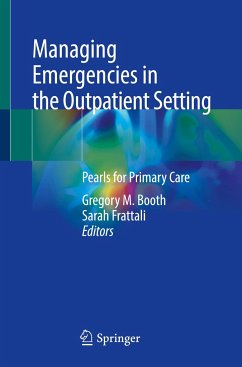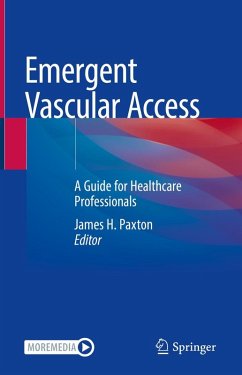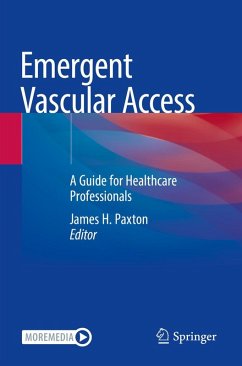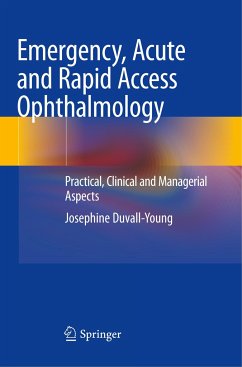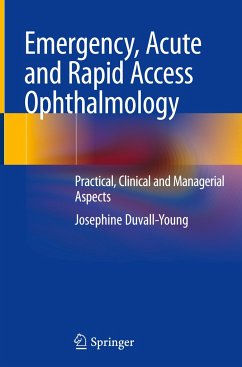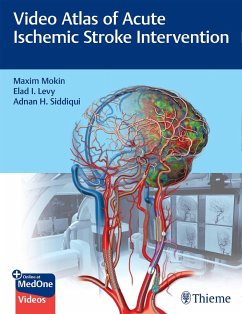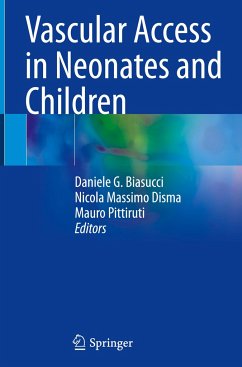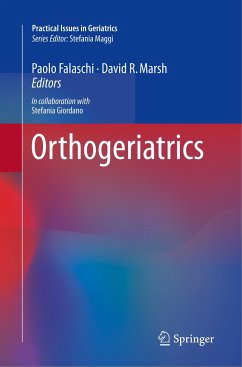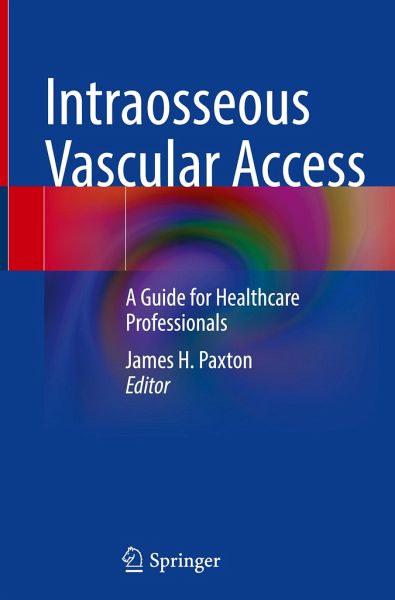
Intraosseous Vascular Access
A Guide for Healthcare Professionals
Herausgegeben: Paxton, James H.

PAYBACK Punkte
53 °P sammeln!
This book summarizes nearly a century of accumulated knowledge on therapeutic intraosseous (IO) access into a concise and well-written review. The emergent infusion of fluids and medications through the IO route can be lifesaving for patients experiencing cardiac arrest, respiratory failure, and other life-threatening medical conditions. Unfortunately, many providers lack the anatomic, therapeutic, and procedural knowledge needed to deploy these devices safely and effectively in critically ill patients.Written for a mixed audience of healthcare professionals, the book opens with an introductio...
This book summarizes nearly a century of accumulated knowledge on therapeutic intraosseous (IO) access into a concise and well-written review. The emergent infusion of fluids and medications through the IO route can be lifesaving for patients experiencing cardiac arrest, respiratory failure, and other life-threatening medical conditions. Unfortunately, many providers lack the anatomic, therapeutic, and procedural knowledge needed to deploy these devices safely and effectively in critically ill patients.
Written for a mixed audience of healthcare professionals, the book opens with an introduction to the relevant anatomy and physiology for those unfamiliar with IO infusion before moving into more advanced topics. The authors cite up-to-date literature on a variety of essential topics, including device and access site selection, decision-making, fluid infusion flow rates, limits of IO technology, compatible medications, complications, pain, and relative contraindications to IO infusion. The book closes with a discussion of the future of IO vascular access and the questions that will guide future research.
Intraosseous Vascular Access: A Guide for Healthcare Professionals is an indispensable reference for any healthcare provider, especially patient care technicians, nurses, medical students, resident physicians, practicing clinicians (including ED, ICU, and floor medicine doctors), and EMS paramedics who place and manage IO catheters.
Written for a mixed audience of healthcare professionals, the book opens with an introduction to the relevant anatomy and physiology for those unfamiliar with IO infusion before moving into more advanced topics. The authors cite up-to-date literature on a variety of essential topics, including device and access site selection, decision-making, fluid infusion flow rates, limits of IO technology, compatible medications, complications, pain, and relative contraindications to IO infusion. The book closes with a discussion of the future of IO vascular access and the questions that will guide future research.
Intraosseous Vascular Access: A Guide for Healthcare Professionals is an indispensable reference for any healthcare provider, especially patient care technicians, nurses, medical students, resident physicians, practicing clinicians (including ED, ICU, and floor medicine doctors), and EMS paramedics who place and manage IO catheters.




